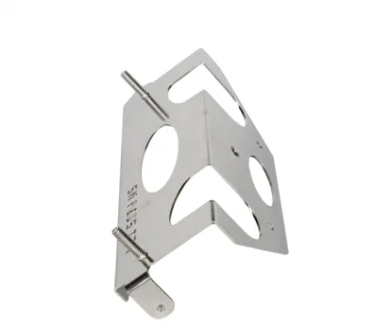- Time:2024/07/19 Posted:Dongguan Quality Innovation And Technology Co.,Ltd
TIG welding, or Tungsten Inert Gas welding, is a preferred method for joining stainless steel photovoltaic brackets due to its precision and ability to produce clean, high-quality welds. However, like any welding process, it comes with its own set of challenges. Understanding common issues and how to address them is crucial for achieving optimal results. Here are some insights and solutions to common problems in TIG welding for stainless steel photovoltaic brackets.

1. Porosity in Welds
Problem: Porosity refers to small gas pockets trapped within the weld metal, leading to weak spots and potential failures in the weld joint.
Solution:
- Gas Flow: Ensure proper shielding gas flow. Too much or too little gas can cause porosity. Typically, a flow rate of 15-20 cubic feet per hour (CFH) is recommended.
- Cleanliness: Clean the stainless steel surfaces thoroughly before welding. Contaminants such as oil, grease, and dirt can introduce gases into the weld pool.
- Tungsten Contamination: Use a dedicated tungsten electrode for stainless steel to avoid contamination. Sharpen the tungsten to a fine point for better arc stability.
2. Cracking in Welds
Problem: Cracking, especially hot cracking, can occur during or immediately after welding due to rapid cooling and thermal stresses.
Solution:
- Preheat: Preheat the stainless steel to around 150-200°C to reduce thermal stresses.
- Interpass Temperature: Maintain a low interpass temperature to prevent overheating. This helps in controlling the cooling rate.
- Filler Material: Use a compatible filler material that matches the base metal’s composition and properties. For stainless steel, ER308L is commonly used.
3. Distortion of Brackets
Problem: Distortion occurs due to uneven heating and cooling, leading to warping and misalignment of the photovoltaic brackets.
Solution:
- Clamping: Use proper clamping and fixturing to hold the brackets in place during welding.
- Weld Sequence: Plan the weld sequence to distribute heat evenly. Weld from the center outwards or use a staggered weld pattern to minimize distortion.
- Heat Control: Apply controlled heat input and avoid excessive heat. Use a pulse welding technique to better manage heat distribution.
4. Inadequate Penetration
Problem: Inadequate penetration can result in weak welds that do not fully fuse the base metals together.
Solution:
- Amperage: Ensure the welding machine is set to the correct amperage for the thickness of the stainless steel. Adjust the amperage to achieve sufficient penetration without burning through.
- Travel Speed: Maintain a consistent travel speed. Moving too quickly can lead to shallow welds, while too slow can cause overheating.
- Electrode Angle: Hold the tungsten electrode at an appropriate angle, typically 15-20 degrees from the vertical, to achieve proper penetration.
5. Oxidation and Discoloration
Problem: Oxidation and discoloration, such as a blue or brown tint, can occur on stainless steel surfaces exposed to air during welding.
Solution:
- Shielding Gas Coverage: Ensure adequate shielding gas coverage throughout the welding process. Argon is commonly used for stainless steel.
- Post-Weld Cleaning: Use stainless steel wire brushes or chemical passivation to clean the weld area after welding, restoring the material’s corrosion resistance.
- Back Purging: For full penetration welds, back purging with argon gas can protect the underside of the weld from oxidation.
6. Arc Stability Issues
Problem: Unstable arc can lead to inconsistent welds and poor weld quality.
Solution:
- Electrode Preparation: Ensure the tungsten electrode is properly sharpened and free from contamination.
- Arc Length: Maintain a consistent arc length, ideally about 1/8 inch from the workpiece.
- Power Source: Use a high-quality power source with stable output to maintain a consistent arc.
Conclusion
TIG welding stainless steel photovoltaic brackets can be challenging, but with the right techniques and attention to detail, high-quality welds are achievable. By addressing common issues such as porosity, cracking, distortion, inadequate penetration, oxidation, and arc stability, you can ensure strong, durable welds that meet the demanding requirements of photovoltaic installations. Following these expert tips and solutions will help you optimize your TIG welding process and produce reliable, high-quality results.
We have many product lines. Could you please specify which type of our products you need, for example: router depaneling machine, laser depaneler, V-groove depaneler, and so on? There are more than a dozen products in each category.
Suppose you are not sure of the exact model you need. You can send us the pictures of finished boards, such as PCB/PCBA/FPC, etc., and we can recommend suitable products for you according to the lines of the boards. It saves you a lot of time and money.
For more details about our products and solutions, I invite you to visit our website: https://seprays.com/
